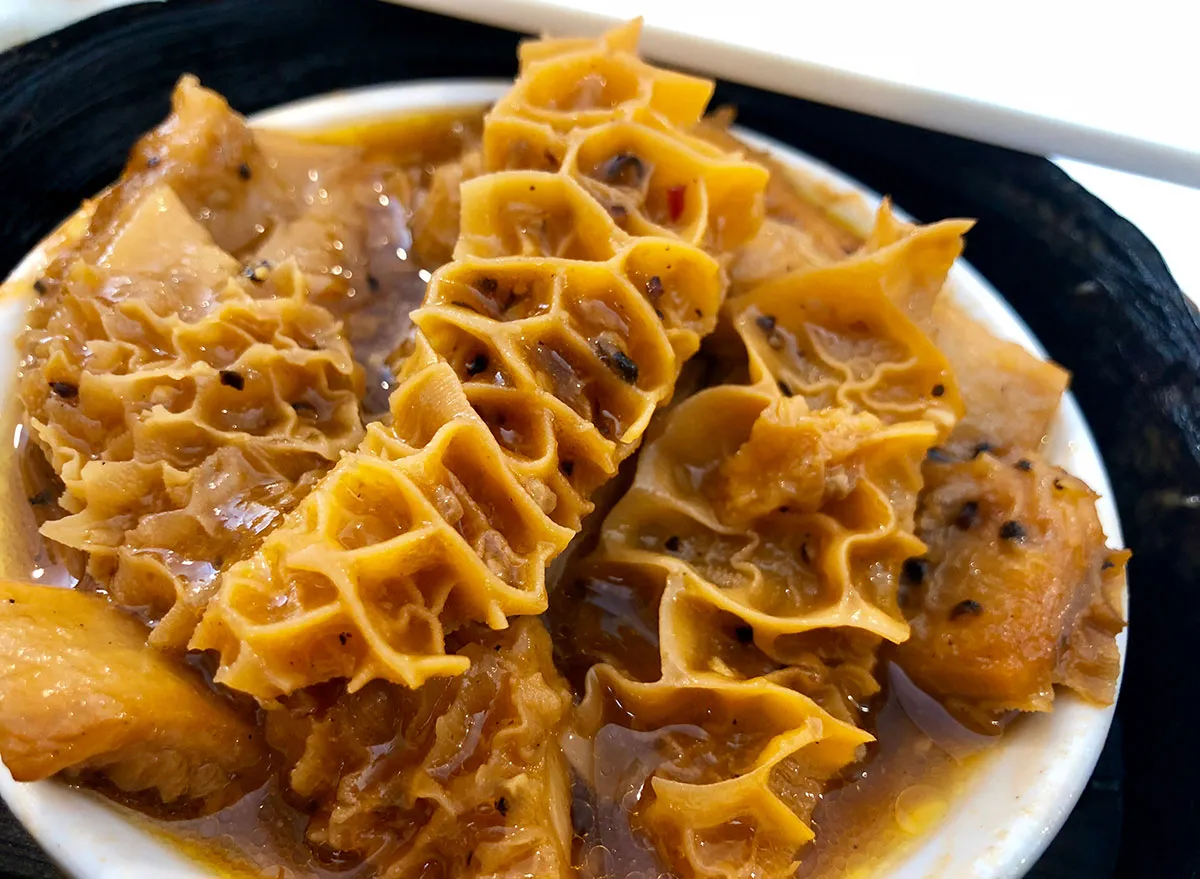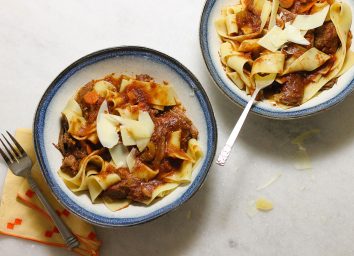What is Tripe and is it Actually Nutritious?

While you may have heard of sweetbreads and foie gras, you may be new to tripe, a solid entry-level offal choice. Offal is a catchall term for the organs or “variety meats” that aren’t as readily found in a typical supermarket as are chicken breasts and skirt steaks.
Depending on one’s culture, offal can either be a taboo ingredient or a lauded dish, but eating these off-cuts is standard practice in many parts of the world. As people are becoming more conscious of the environmental ramifications of eating meat, it’s time to go nose-to-tail and give offal a try.
Here’s what you need to know about tripe, from its health benefits to the best ways to go about preparing it.
What is tripe, exactly?
Tripe is the edible lining of a farm animal’s stomach, typically coming from cows. Unlike humans, cows have multi-chambered stomachs (despite your insistence that you have a separate “dessert stomach”).
There are four chambers, and thus four types of tripe. One of the most well-known kinds is called honeycomb. There’s also omasum tripe, abomasum tripe, and blanket tripe. We’d recommend all except blanket tripe, which is generally considered the least desirable of the four varieties.
What are its health benefits?
If you’re new to offal, the surface-level idea of eating a stomach may not sound as appealing as eating a thick, juicy burger. But tripe is bursting with health benefits, with some even calling it a superfood. It has good amounts of iron, calcium, and protein.
One 5-ounce serving has 17 grams of protein, 5 grams of fat, and fewer than 150 calories. It is also rich in vitamin B12, selenium, and zinc, all of which are challenging to get enough of through diet alone. It is high in cholesterol though, so take note of that.
How to use it in cooking
Flavor-wise, tripe is among the milder offerings on the offal spectrum, especially compared to other organs like liver and kidney. That means it takes on whatever flavor you add to it, like cauliflower and tofu.
Tripe is a traditional ingredient in Italian cuisine, so you could tap into your inner nonna and cook it with marinara sauce, garbanzo beans, and white wine.
You can also use it when making homemade beef stock in order to deepen the flavor. It’s most often prepared by boiling or cooking it in a stew (like this hearty Madrid-style recipe), rather than dry-roasting it.
If you’re new to tripe, don’t hesitate to chat up your local butcher. They’re likely to have cooking tips and recipe suggestions to offer you, and can help by cleaning it for you.
Bottom line: Time to try tripe?
Yes, and not just because we like to follow the basic principle of trying anything twice. It’s been around for hundreds of years—especially in Italy, and we trust the Italians when it comes to cooking delicacies.
It’s a good rule of thumb to use as much of an animal as possible, in order to reduce waste and do right by the animal. The next time you find yourself staring at the meat section of the supermarket with decision paralysis over what to make for dinner, give tripe a try.








